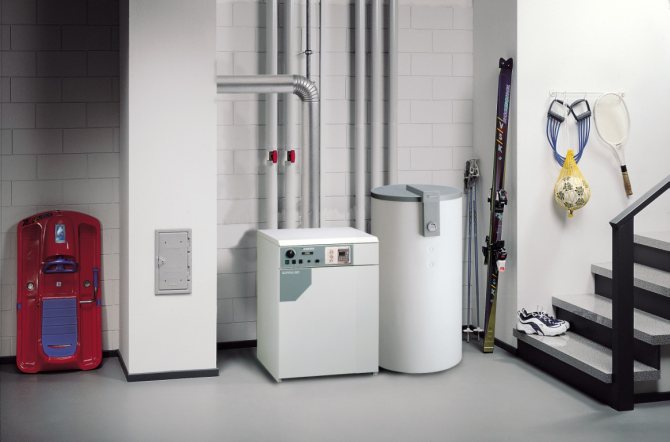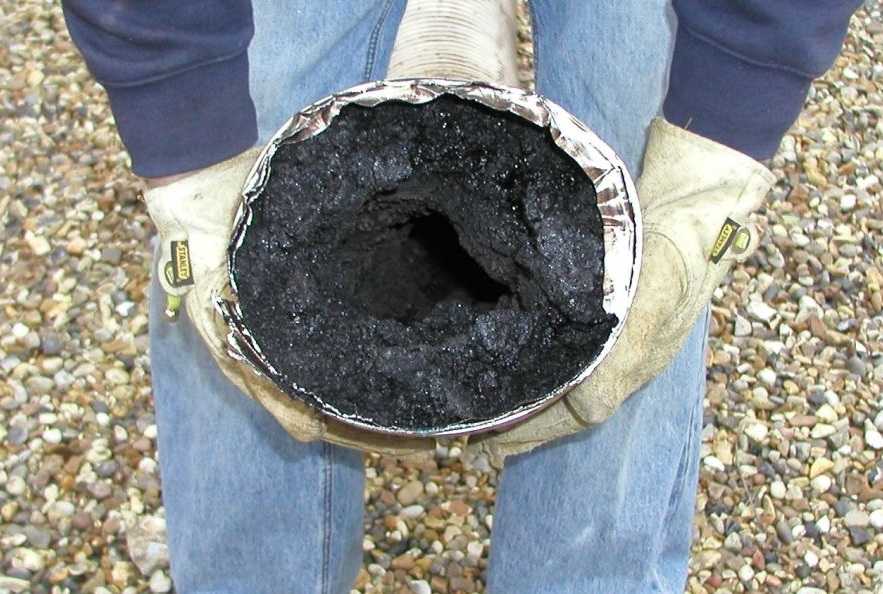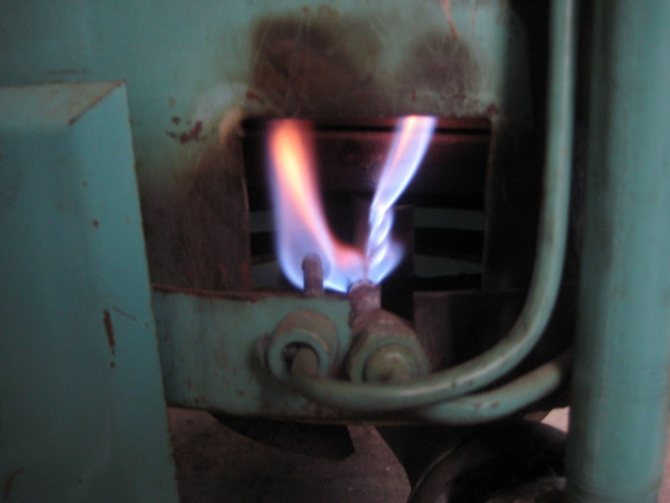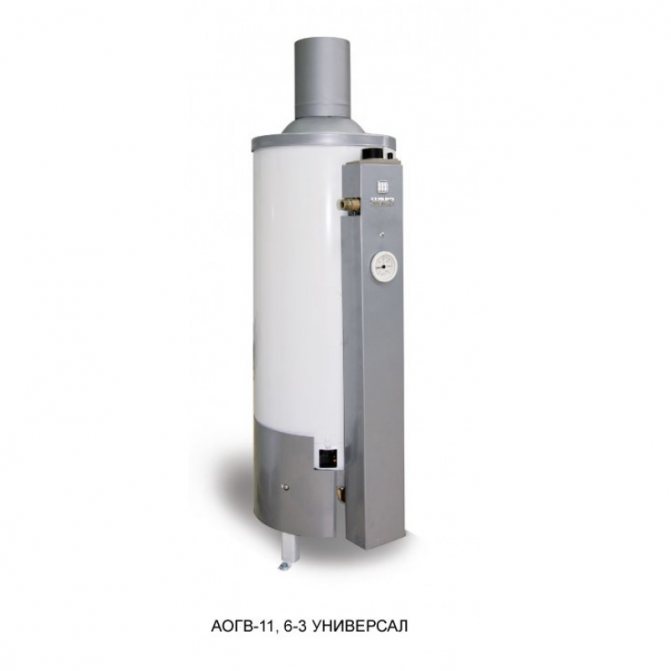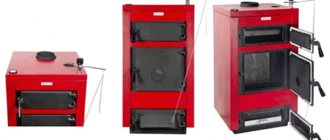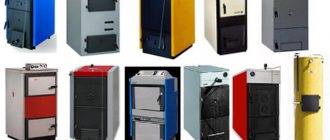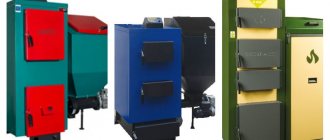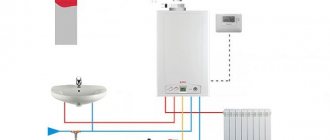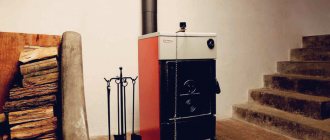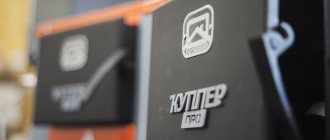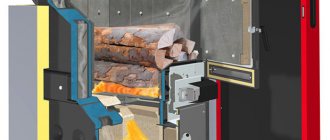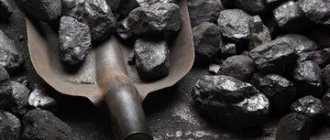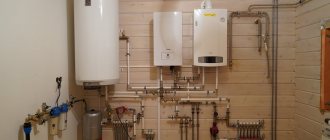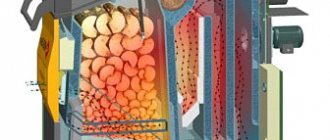The reasons that the gas boiler smokes
Basically, the reasons why a gas boiler smokes are as follows:
- Insufficient air flow.
- Excess air.
- Poor fuel quality.
- Insufficient gas pressure.
- Burner blockage.
- Insufficient coolant temperature.
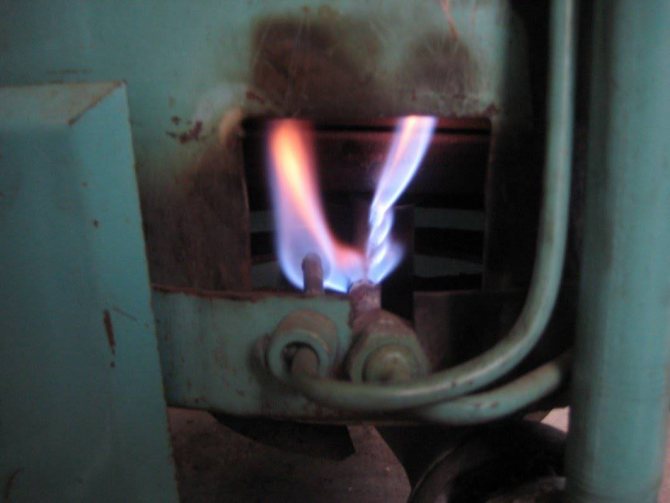
Lack of air
Insufficient air flow is usually associated with poor ventilation, a blockage in the chimney, or a change in air flow. If the problem is related to the ventilation of the room where the gas unit is located, it must be cleaned and adjusted.
It happens that the flow of air does not allow ice on the head or a blockage in the pipe to penetrate. Then you have to get rid of these obstacles.
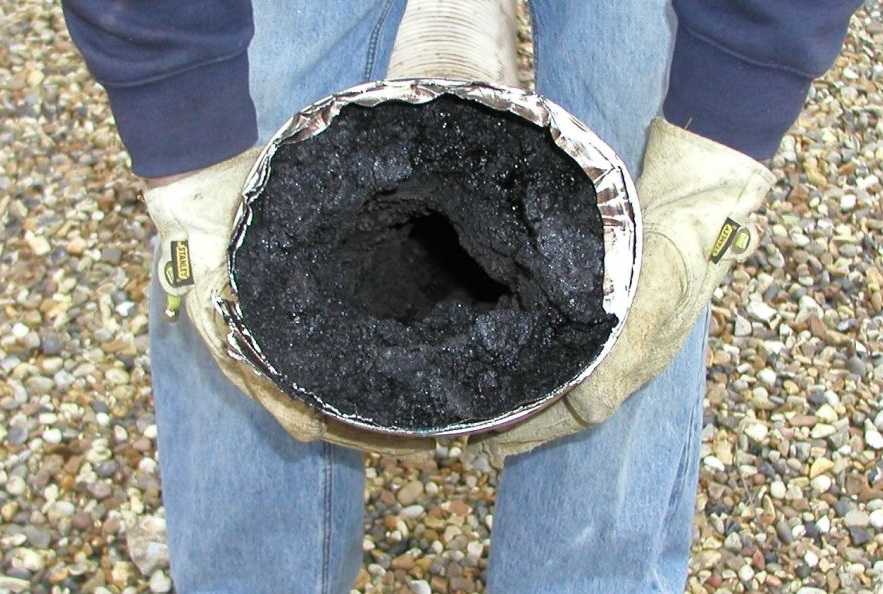

Sometimes, in strong winds, pressure drops appear in the pipe, which prevents the flow of air to the burner. In this case, it is worth correcting the design of the gas boiler or installing a deflector on the pipe head.
With a lack of oxygen, the fuel does not burn completely, which is why soot is formed.
Excess air masses
Excessive air flow usually occurs with strong draft, if there is no adjustment. Excessive thrust occurs due to changes in the weather: low temperatures, changes in air pressure, in strong winds.
With an excess of air masses, the flame is unstable, there is a lack of temperature, as a result of which the gas does not completely burn out and forms soot.
Note! Too little or too much air can be caused by an incorrectly adjusted burner on the unit.
Poor fuel quality
If the fuel contains moisture or impurities, then during combustion they form soot and reduce the performance of gas equipment. In this case, experts recommend installing a filter at the inlet of the gas line.
Insufficient gas pressure
Also, the reason why a gas boiler can smoke is the low gas pressure. Often this phenomenon occurs in severe frosts, when many consumers are actively starting to consume fuel. Signs of low pressure are:
- short flame with separation;
- decrease in boiler power.
Also, the reasons for insufficient fuel pressure can be:
- blockage of the pipeline;
- malfunctions in the gas meter.
Burner blockage
During operation, especially if the gas is of poor quality, sooner or later the burner becomes clogged with soot and dirt. When fuel is burned in a contaminated burner, not only the gas itself burns out, but also the dirt accumulated on the nozzles, which results in soot.
To prevent this from happening, it is necessary to regularly clean the nozzles or change them.
Insufficient coolant temperature
All boilers have such a characteristic as the maximum temperature of the heating medium. Usually it is 80-85ºC. If the temperature of the liquid is not high enough, the resulting flue gases become too cold, which leads to a weakening of draft and smoking.
This equipment is not too difficult to maintain.
However, due to the specifics of its work, it requires some attention during operation. Further in the article, we will consider ways to eliminate the most common problems and the reasons for their occurrence.
What to do if the boiler is "crying"
Condensate starts to flow out of the boiler when the return temperature is too low. This problem requires elimination, since such a malfunction reduces the service life of the boiler. At the same time, soot and soot accumulate inside the equipment.To avoid the occurrence of such a situation in pellet and wood boilers, it is necessary to ensure that the temperature of the coolant in the return line is at least 55 grams.
At the same time, 60-65 grams can be considered the best option. In order to ensure such operating conditions, use Laddomat or three-way mixing valves.
Reasons for overheating of solid fuel boilers and how to fix this problem
A solid fuel boiler can overheat mainly in two cases:
If the premises of the house consume less heat than the boiler itself generates. The features of this equipment are such that precise power control is simply impossible. As a result, the coolant heats up until it begins to boil and the excess steam is discharged through a special valve; Roughly the same situation occurs when the circulation pump stops functioning for any reason. In this case, boiling occurs as a result of the fact that heat removal from the boiler ceases to be carried out.
How can you protect your equipment from overheating? Experts advise using a special storage tank for this purpose, as well as a UPS (uninterruptible power supply).
The latter is necessary, first of all, to ensure the stability of the pump, the former is designed to take excess heat. In order to protect the boiler from overheating, it is worth using the WATTS STS-20 and REGULUS TSV valves.
Other common problems
Very often, owners of solid fuel boilers are also forced to solve the following problems:
Smokes. Poor pipe draft is the reason. Most likely, the air heating of a private house will just need to be cleaned of soot; High fuel consumption. The problem usually lies either in the incorrect connection of the boiler (incorrectly selected power), or in the use of low-quality fuel or poor insulation of the room; Water flows from the chimney. In this case, the latter should be insulated; The burner is clogged in the pellet boiler. To avoid this, use only high quality pellets from certified suppliers.
Fault classification
All problems with gas boilers can be divided into categories:
- Primary or secondary. Primary ones are evidence of problems of an indicator nature in the operation of one or even several nodes. If the fault has not been repaired, a secondary fault appears. It is the result of ignoring the problem. After a secondary malfunction occurs, the equipment stops working.
- Hidden or obvious. The first group includes leaks of heat exchangers or butt joints, breakdowns in the hot water supply or heating circuits, as well as other malfunctions that a person cannot identify without appropriate training.
- Gradual or sudden. Some damage develops imperceptibly due to a change in the parameters of the functioning of units or a change in conditions, while others are unpredictable and suddenly appear at the least suitable moment.
- Final damage. Sometimes the cause of an accident can be identified immediately. For example, after a fall, the unit immediately stops working. Then the cause is mechanical damage.
Burner damping
Burner damping is one of the most common faults. If this happened during the start-up of the device, the reason is:
- Excessive cravings
- violation of gas evacuation, lack of traction;
- incorrect operation of the sensor;
- shortage of thermocouple contact.
The first reaction to burner damping is to check the draft. It is very simple to do this - you need to light a match or a candle, and then bring the flame closer to the air duct.The presence of a stable draft will be indicated by the tip of the flame, which will go inside the boiler body. The fire must not go out. In the absence of traction, the tip will deviate slightly. Sometimes the cravings are excessive. Then the fire will immediately rush into the air duct, begin to swing strongly or go out altogether.
Another common cause of burner extinction is a thermocouple, or rather insufficient contact. In this case, when the boiler is started, the burner ignites, but the flame quickly goes out, having emitted a quiet pop before that. Such a malfunction can be corrected by yourself. To restore work, you just need to clean the contacts.
Traction normalization methods
If the burner goes out immediately after firing up, the reason may be hidden in the draft sensor. This problem cannot be solved by restarting the equipment, because the sensor is a supervisory component that blocks the operation of the unit.
To diagnose a breakdown of this spare part, you just need to close the terminals, bypassing the sensor, and then start the equipment. If the boiler turns on normally and continues to work as usual, the sensor is out of order. You can replace it on your own. If the unit does not start, then you should immediately turn off the gas and call a specialist. Only a master will be able to carry out the appropriate diagnostics of the boiler using specialized devices. He must inspect the main and auxiliary elements when diagnosing equipment.
Excessive draft can provoke blocking of the unit, the air mass breaks off the flame, due to which the gas supply is cut off. The thrust force can be determined without turning off the equipment, because with its abundance, the flame acquires a light yellow tint, instead of blue, or it becomes colorless. In addition, in the presence of strong thrust, the device operates with a constant hum.
The cause of problematic draft may be incorrect placement of the chimney or boiler. Strong gusts of wind can disrupt the free flow of air, an excess of pressure appears, and the chimney can be clogged. As a result, the flame is extinguished and the boiler is blocked. To prevent this from happening, it is worth entrusting the installation of heating equipment, as well as the arrangement of the chimney to specialists. They take into account in their work not only the current rules and standards, but also the direction of the winds, as well as many other features.
Why does soot appear?
During its operation, a gas boiler burns a large amount of natural gas, which is impossible without oxygen. To burn one cube of gas, you need 10 cubic meters of air, and if it is not enough, the gas simply will not completely burn, forming a huge amount of soot in the process. This can only be prevented by providing sufficient air supply.
Before adjusting the airflow, pay attention to the flame. In order not to look inside the boiler, risking your eyesight, you should use a mirror:
- The flame may occasionally skip or fly off if there is too much air. In addition, the device will be very noisy.
- If air is supplied in sufficient quantity, the boiler works evenly, the burner flame is also even and has a bluish tint.
- In the event of a lack of air, the flame turns reddish or takes on a yellow tint, the unit functions unevenly, turns off and smokes.
When soot is released, dust particles are quickly drawn into the platform. There it blocks the air channels, the chimney itself, and also forms places of strong accumulation of soot inside the structure. Dirt accumulates on the walls of the chimney, sticks to the burner, due to which the boiler stops working.
Flame separation and its causes
The flame begins to detach or skip as a result of the change in thrust.As soon as it becomes insufficient or excessive, the burner ceases to function normally, therefore, the performance of the entire boiler system may depend on the timely removal of combustion products, as well as the uniform supply of oxygen. Correct traction not only contributes to the normal operation of the equipment, it prevents it from overheating. The burner evenly heats up all circuits, and the flue gas monitoring sensors do not block the operation of the equipment. Constant monitoring of the air draft and exhaust gas discharge is a guarantee of the smooth functioning of the unit.
The burner operation depends not only on the draft, but also on the integrity of the nozzles. As a result of a violation of the order or the integrity of their outgoing openings, a breakthrough or flame separation occurs. Hole placement can be disturbed as a result of:
- Preventive cleaning;
- an attempt at tuning by a non-professional;
- incorrect functioning of the burner.
If the injectors themselves are damaged, they should be replaced immediately. The strong pressure in the gas pipeline also causes a breakaway. Elimination of this problem is possible only by contacting the gas service, because independent intervention in the gas pipeline is prohibited.
How does the season affect the boiler operation?
Sometimes the reason for the burner to go out is a rise in outside temperature. This happens during a warm period, most often in July-August, when the temperature reaches its peak. It is at this time that the air draft is greatly weakened.
The reason for the decrease in draft is the small temperature difference outside and inside the building. Therefore, in the summer, it is not recommended to use the boiler constantly or at full capacity. It is better to just periodically turn it on exclusively to heat the required amount of water, and then turn it off.
If the control sensor works normally in winter, it can block equipment in summer for no apparent reason. In this case, the fault lies with the manufacturer. This is possible only with unfair work and poor quality workmanship. You can solve the problem simply by replacing the element.
All heating devices need to be treated with respect. Reducing the likelihood of breakdown is possible only with the help of competent installation, correct adjustment and periodic maintenance. It is advisable to carry out diagnostics at least twice a year - before and after the end of the heating season. In addition, it is better to entrust installation, maintenance, and adjustment to specialists who guarantee the quality of their work.
Then, after a while, after analyzing the possible nuances and risks, it was decided to equip the air boost. First, an experiment was carried out with a compressor from an aquarium (air flow rate 100 l / h). There was no effect at all. Then, for this purpose, a VKMts-100 fan with a power of 72 W and an air flow rate of 250 m3 / h was purchased at random.
The fan is designed for continuous operation.
Since at the time of the experiment, the boiler was already clogged, and again to disassemble it for cleaning ... I VERY didn't want to, without much hesitation, an adapter to the hose was quickly built from improvised means. The case went, in particular, a can of some kind of deodorant, an adapter from the sewer pipes, a hose and a certain amount of electrical tape. A curved steel tube (pictured) was attached to the other end of the hose. Hose - regular PVC (green) 3/4 ″ diameter. And the tube, by the way, is from the frame of a children's bicycle, this orange (these were produced back in Soviet times), with an inner diameter of 9 mm.
This tube was inserted into one of the holes in the lower part of the burner tube, through which air is sucked in during the boiler operation. Well, after all that, the fan was turned on.
The changes were especially striking in the dark. If the flame in the boiler was red without aspiration, then during the pressurization process it had a blue color, albeit with a slight admixture of red.The presence of red indicates that there is still insufficient air; therefore, it is necessary either to use a more powerful fan or to reduce the resistance to air movement from the fan to the gas burner. Since we did not have the opportunity to use a wide hose (ideally, it should be equal to 10 cm, i.e. coincide with the diameter of the fan outlet), then naturally, as a result of this, there is not enough air supply. However, as an option, you can position the fan close to the burner and, accordingly, shorten the length of the hose. This will also help to reduce aerodynamic drag.
In this case, of course, it will be necessary to take measures to exclude excessive heating of the fan from the gas boiler. For example, you can use sheet asbestos or fiberglass for these purposes.
However, since the boiler was already clogged, this event was not enough: after all, there was practically no draft. Then, with the help of a cloth, the annular gap between the boiler drum cover and the conical adapter was sealed. The temperature of the boiler body and chimney was periodically monitored, but it did not exceed 150 ° C. And ... soon the water temperature began to gradually rise (by about half a degree per hour) while the gas consumption remained unchanged. Finally, she reached the norm for our home. And the house is not small, there are carpets on the walls everywhere, and they interfere with the convection of warm air coming from the heating pipes, so the water temperature in severe frosts should be at least 92 ... 94оС. Whereas in front of the pressurization device the temperature was less than 70 ° C and was not going to rise more.
After that, the fabric was removed, the gap was depressurized. The fact is that excessive heating of the chimney is dangerous, at least in terms of fire. And the chimney will burn out faster. Finally, with a sharp gust of wind (when the thrust increases sharply, which can lead to a flame blowout), the existing gap plays the role of a spare section through which part of the air from the room will flow; therefore, less air will pass through the boiler and thus the risk of flame blowout will be reduced. But, in those days, the weather was calm, the risk was minimal.
Thus, the problem with the boiler was solved: it stopped clogging with soot; that soot that was inside, apparently, burned out safely, because now the thrust is excellent. The fan has been running for probably a couple of months now. The flame in the cauldron is still blue with red flashes. No more clogging.
By the way. Periodically, the flame becomes completely blue (as it should be), then again with red flashes. The period of these changes is several hours. This clearly indicates that the composition of the gas is changing. Or something is mixed there (for example, gases from our chemical plant in Ufa; of course, this, apparently, is more economical than simply burning them in the atmosphere in the form of an eternally burning torch). Or the gas flow is uneven in its chemical composition. In addition to propane-butane, other components may periodically appear that have a higher molecular weight, respectively, requiring more oxygen for combustion.
The only problem is now. The fact is that when the water temperature reaches the set one, the gas regulator (located outside the boiler on the side) automatically switches the boiler to the incomplete supply mode; at the same time, the flame burns much weaker, respectively, less gas is supplied. But the airflow does not change, therefore, there is an excess of oxygen, the gas-air mixture is depleted. This sometimes results in a flame appearing inside the pipe (bottom of the burner). Naturally, there is nothing wrong with that, the flame will not come out even theoretically. But ... somehow it is ugly roofing felts, either indecent, or it is not yet clear how. And we are not so accepted, such technical obscenities. We never act according to the principle "if only it works."The problem is that now, at the moment the gas supply to the burner decreases, it would be necessary to turn off the fan and turn it on only when the gas flow returns to the nominal one. Well ... there will be time, let's think about the reed relay. A small magnet for it can be attached to a switch plate that (partially) shuts off the gas supply. And place the reed switch itself outside the housing in which the plate is located. Fortunately, the case is aluminum, i.e. non-magnetic.
And the last one.
Something is written here above. However, I hope you know that unauthorized interference with gas equipment is FORBIDDEN in our country. Therefore, we do not recommend that you use any of what was discussed here. It was said so, for information, for informational purposes. Well, and for especially "advanced" (more precisely, moved ... well, or they have such a profession) in terms of formalities, citizens - for them personally we inform the following: everything that you have read here (about the gas boiler and its improvement), most likely , there was no trace. We ourselves do not remember how it was and what it was ... We wrote a fairy tale here, so, night fantasies. Not all A.S. Pushkin to read, let there be such a fairy tale.
Well, for those who have a hard time with physics - chemistry, we do not even recommend reading such articles, and even more so, to apply the knowledge gained in practice. We say this for sure, without any fairy tales. Have pity on yourself and others. Live Long! It is for you, indeed, in such cases, you need to call the master, buy a new boiler, well, etc. Best regards to you all.
Boiler draft regulator
With help draft regulator solid fuel boilers can support the chosen You temperature, it remains only to load them with new portions of fuel. The regulator consists of a control thermostat which is connected by a chain to the door of the lower damper. The wider the lower door is opened, the more air enters the furnace for combustion. It works like this: On the thermostat, you set the desired temperature, as the boiler cools down, the lever rises, and through the chain opens the damper. The air flow increases and the flame in the boiler flares up more strongly. Mechanical draft regulator has low accuracy and the risk of parts jamming. If, as a result of operation, it turns out that there are not enough primitive adjustments, then an electronic regulator can be installed that opens the damper and changes the speed of the circulation pump.
Causes of boiler fuming
Some signs help determine what to look at in the first place when fumes and soot appear in the room. Conditionally, the causes of smoke can be divided into 4 groups:
- Clogged chimney is one of the most common problems. This can be either a foreign object that has entered from the outside, or the result of using low-quality fuel.
- The discrepancy between the chimney power of the boiler or the height of the building is less common and is detected almost immediately, at the very first heating. In a situation where at first everything was fine, and then began to smoke, this reason should not be considered.
- Damage to the chimney is the least likely case. But if the boiler gives off smoke at the beginning of a new heating season, then inspection of the pipe should be one of the first tasks.
- Weather conditions affect natural draft in only two cases: a low chimney height and an incorrect location of the fresh air inflow point.
ATTENTION! A problem that occurs immediately after the installation of the equipment indicates errors made during the installation process.
The smoker should be raised above the roof ridge. The diameter of the pipe is selected in strict accordance with the power of the boiler: a small cross-section simply cannot cope with the removal of smoke from a serious firebox. You should also avoid right angles in places where the pipe changes direction - this makes it difficult for air to circulate, which is not the best reflected in the draft. Visual inspection allows you to identify these shortcomings and eliminate them.
Chimney fan
Chimney - an important part of the heating system. Backdraft, smoke in the boiler room and the inability to warm up the boiler to the required temperature are the consequences of errors in the installation of a pipe to remove burnt gases from the boiler. It is treated with a simple installation - chimney lengthening above the ridge point, and if this is not possible, then a special exhaust fan, which is made of special materials. The power of the boiler increases, the risks of carbon monoxide penetration into the premises disappear.
If the gas boiler smokes
In addition to errors associated with improper installation of equipment, fuel quality plays an important role in the operation of the unit. This issue is especially relevant when using liquefied gas from a cylinder.
After the combustion of clean fuel, a small amount of dry soot remains. Flakes of this substance accumulated in the pipe can be easily removed. It is enough to knock on the chimney from the outside and remove the crumbling soot through the technical window.
After combustion of gas with a large number of impurities on the walls of the chimney, gradually narrowing the gap, greasy soot sticks. It is quite difficult to cleanse this substance. A regular pipe brush may be useless. In such a situation, it would be best to disassemble and clean the smoker separately.
Quite often, a gas boiler smokes due to improper adjustment of the flame intensity. If the user, in violation of all instructions, turned on the burner of a cold boiler at full power, then the appearance of smoke will be a natural result. The problem can be avoided by gradually increasing the combustion temperature after kindling.
Problems with the solid fuel boiler
Sometimes the heating device smokes due to the banal filling of the ash pan. Before looking for another possible source of problems, you should free the blower and check the condition of the grate.
The second most frequent malfunction of a solid fuel boiler is a clogged chimney. The reason is poor quality fuel. When using raw wood or wood with a high resin content, not only soot is formed, which easily crumbles after tapping on the flue gas hood. Resinous soot with a high moisture content adheres firmly to the walls, after which it hardens and narrows the pipe diameter.
ATTENTION! If raw firewood is used and there is no proper thermal insulation of the smoker, then this leads to the formation of condensation. When combined with soot, it turns into a corrosive substance that can damage the chimney. When the pipe is corroded, the draft is disrupted.
Reviews of household boilers with top-down combustion: advantages and disadvantages
| Benefits | disadvantages |
| Profitability - due to the principle of burning from top to bottom, savings of 10 to 30% are achieved. | High price - models with top burning cost an average of 1.5-2 times more. |
| Higher efficiency - the principle of slow burning on the edge of smoldering, more advanced alloys and the design of the body allow to achieve an efficiency of 85-92%, while for conventional solid fuel boilers the efficiency is often 75-86%, and higher rates are considered an extremely significant merit. | Increased fuel requirements - the moisture content of firewood should preferably not exceed 20-30%, coal - 15-20%. Depending on the model, manufacturers have different requirements for the fraction and ash content of coal. The duration of burning depends on compliance with the recommendations. |
| Easier operation - this is both the possibility of much rarer loading, and easier maintenance and cleaning. | Process continuity - it is impossible to reload an already lit boiler, and after stopping the operation of the boiler, smoldering will still continue until complete combustion. |
| Availability of non-volatile models - models that do not require an electrical connection. | Large dimensions - shaft-type boilers are compact in area, but often more than 2 meters in height, and standard "square" models are not easy to fit into small boiler rooms with an area of 4-5 m2. |
| Reliability - despite the additional elements, the design of the boilers remains simple and reliable. | Limited choice - there are not so many models on the market, but most of them are known for their quality and reliability |
| Condensation possible - not a rare problem according to the owners' reviews. This may be due to the use of too damp fuel or an excessively high flow of water, in cases where a circulation pump is used. |
What to do if the boiler smokes
Regardless of why fumes began to appear, it is necessary to stop kindling and conduct a visual inspection of the equipment for damage.
IMPORTANT! Particular attention should be paid to the traction stabilizer if it is integrated into the exhaust system. Sometimes it is enough to adjust the confuser or check the condition of the interrupt valve to get rid of problems for a long time.
Smoke immediately after the installation of the equipment indicates errors made during installation. In this case, it is necessary to recheck all components and connections to make sure that the chimney is intact and installed correctly.
At the beginning of the heating season, smoke in the boiler room indicates a clogged or damaged exhaust system. Usually, after fixing the problems, the thrust is restored.
If the gas boiler gives off smoke when it starts up, and then everything gets better, then it makes sense to check the burner. Clogged, it not only "pleases" with soot, but also reduces the performance of the unit. In a solid fuel boiler, the reason for the "starting" smoke is often the low quality of firewood.
Heating element
Built into the boiler block of heating electrical elements
All popular 2 in 1 models have a built-in TEN - electric heating element... It is needed when the firewood in the firebox burns out, you can turn on the heating of antifreeze from electricity and not make trips with firewood to the boiler door. For example, you loaded coal or briquettes in the evening, they burned out at night and the boiler began to cool down, the electric heating element turned on and the heat is maintained at a predetermined comfortable level until the morning!

